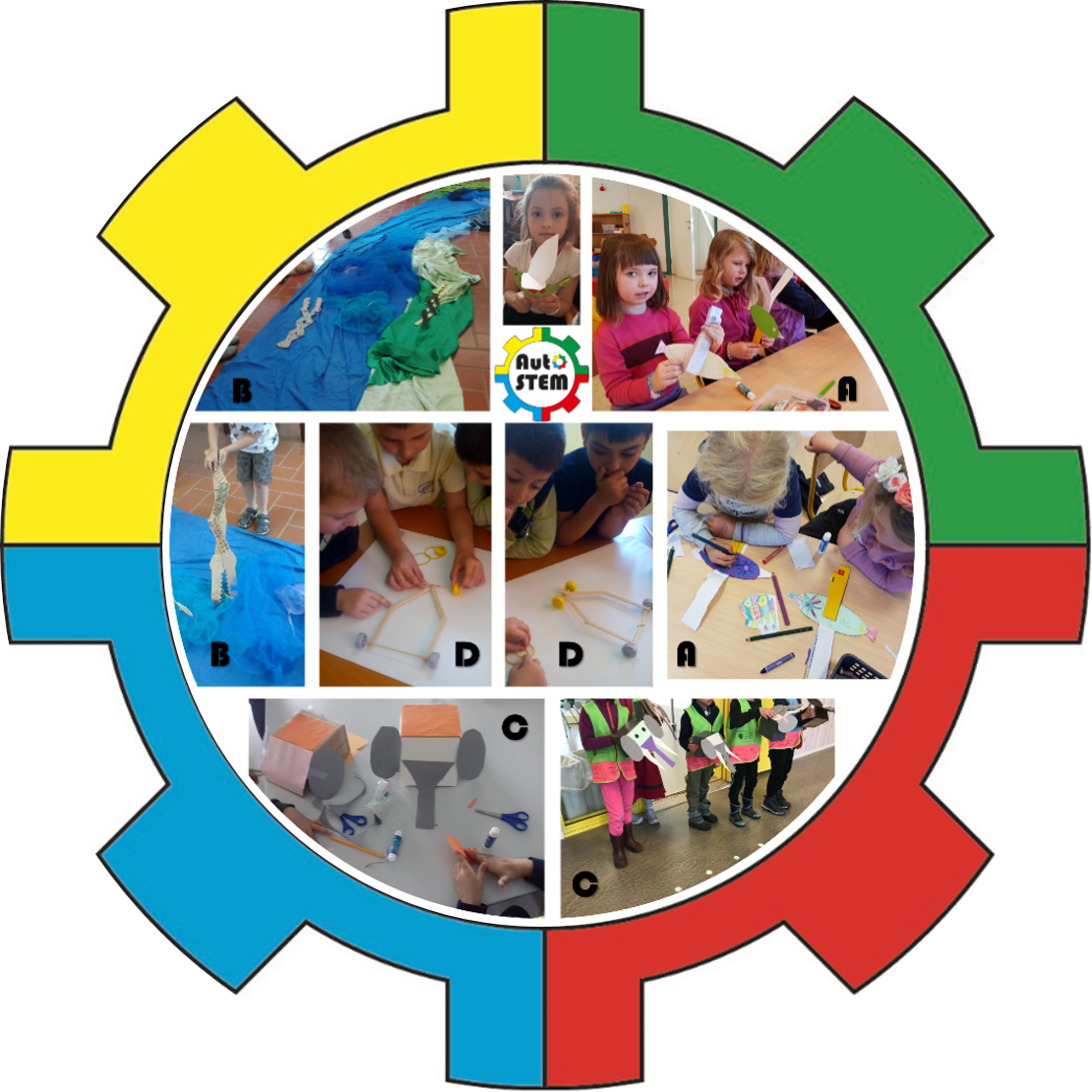Ongoing evaluation is an essential part of every project. During the whole project period, the teacher will ask, ‘Where are we?’, ‘Where should we be?’ and ‘How can we get on track again?’ (Lewis, 2000, p. 185). The evaluation enables the teacher to keep track of the children’s learning progress and to know when the learning goals are reached (see page 13 of the Step by step guide).
The multilevel model of Donald Kirkpatrick
The multilevel model of Donald Kirkpatrick, in which the evaluation of AutoSTEM activities is inspired, has four different levels, that evaluate various things through different instruments.
Even though this model has four established categories and there’s a different way of evaluating each one of them, a questionnaire can be constituted by items that are related to various categories. For example, in the same questionnaire, both the satisfaction and the learning can be measured.
In the case of the children’s activities evaluation, the available instruments cover mostly the two first levels, the reactions and learning. In the evaluation of teachers and educators’ trainings, items can be developed to evaluate all four levels of the multilevel model. Also, an important way for teachers and educators to understand their progress is their own reflection about their teaching practices.
As this is a model for evaluating training, it is important to make flexible use of it when assessing children’s activities. Therefore, these four levels should not be seen as rigid and tight, but rather as categories that facilitate the organization of the data collected.
Reactions
In this category is normally considered the satisfaction with the activity. To evaluate the satisfaction, you can consider both the questionnaire and the notes taken in the observation guide, like the verbal and non-verbal demonstrations of satisfaction that you registered during the activity.
Learning
The learning achieved by the children can be evaluated by analyzing the products of the activity, in other words, the toys built, by comparing the results of the pre and post test and by the observation done during the activity. Also, the final questionnaire can give us the perception that the children have about their own learning.
Behaviour
This level is related to the changes that can be noticed in the children after the activity. This section is also very related to the learning since it is spoused that the children learn something with the activity, and that learning will make them change their habits or their future learnings.
One way of acknowledging these changes can be the observation. The teachers or educators can notice a bigger preoccupation with the environment or an increased use of reusable materials, children can also think of other toys with mechanisms, or can start using some strategies used in the activity in their everyday learnings, for example, using the ruler to take measures. Other changes can occur in the children’s behavior, such as showing more interest or motivation for activities, more curiosity, desire for accomplishment and initiative, more communication about their experiences, among others.
Results
This category is related to the impact of the activity, in a higher level. The teachers or educators can reflect on how this activity made them change their teaching practices.
The success or otherwise of the activity may have an impact on the teaching undertaken by the teacher, who will use these activities more often if he or she can see that they are appreciated and result in significant learning.
Another way to evaluate the results is to see how the children’s academic results were affected by this activity and may result in an improvement in their academic results, which indicates the impact of this activity.

